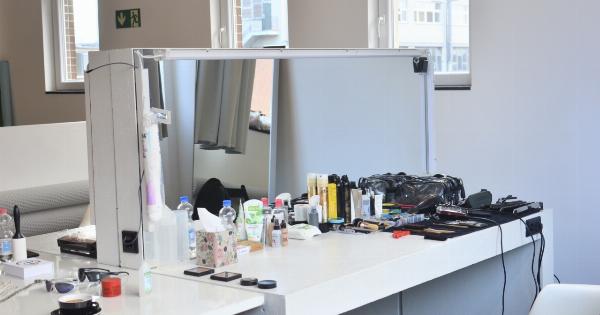Hair is an integral part of our physical appearance, and for many people, its health and appearance are of utmost importance. With the constant exposure to various hair care myths, it can be challenging to separate fact from fiction.
One such popular belief is that frequent haircuts lead to increased hair fall. In this article, we will delve into the truth behind this myth and explore whether frequent haircuts truly have any impact on hair loss.
The Hair Growth Cycle
Before we assess the veracity of the claim, it is crucial to understand how the hair growth cycle functions. Human hair goes through three distinct phases: anagen, catagen, and telogen.
The anagen phase is the growth stage, wherein hair actively grows from the root. This phase typically lasts for about two to six years. The catagen phase is a transitional stage that lasts for a few weeks and involves the cessation of hair growth.
Finally, the telogen phase is the resting phase, during which the hair is shed and replaced by new hair.
The Impact of Haircuts on Hair Growth
Contrary to popular belief, frequent haircuts have no direct influence on the hair growth cycle. The hair follicles responsible for hair growth are present beneath the scalp, and cutting the hair does not affect their activity.
Haircuts merely shorten the visible length of the hair shaft and do not interfere with the natural growth process.
Trimming and Hair Health
While haircuts may not impact hair growth, they do play a crucial role in maintaining overall hair health. Regular trims can help prevent split ends and breakage, which can give the appearance of thinning hair.
When split ends are left untrimmed, they have the potential to travel up the hair shaft, causing further damage. By getting regular haircuts, individuals can maintain their hair’s structural integrity, thereby reducing the likelihood of breakage and promoting healthy hair growth.
The Psychological Aspect
It is essential to acknowledge the psychological impact that haircuts can have on individuals experiencing hair loss. For those grappling with hair thinning or hair fall, the prospect of losing even more hair during a cut can be distressing.
This psychological association between haircuts and hair loss often perpetuates the myth at hand. However, it is crucial to remember that haircuts themselves do not cause hair loss and should not be avoided out of fear.
The Effects of Genetics and Hormones on Hair Loss
Genetics and hormones are the primary culprits behind hair loss, with conditions like androgenetic alopecia (male-pattern or female-pattern baldness) being the most common causes.
These conditions are predominantly influenced by the genes inherited from one’s parents and the hormonal balance within the body. Frequent haircuts do not alter one’s genetic makeup or hormonal levels, and therefore cannot be held responsible for hair loss.
Proper Hair Care Practices
While haircuts may not directly contribute to hair loss, it is essential to adopt proper hair care practices to ensure optimal hair health.
This includes incorporating a balanced diet, using gentle hair care products, and avoiding excessive heat styling or chemical treatments. Maintaining a healthy scalp and providing the necessary nutrients to the hair follicles can positively impact hair growth and reduce the risk of hair loss.
Common Myths about Haircuts and Hair Loss
There are several misconceptions surrounding haircuts and their relation to hair loss. Let’s debunk some of the most common myths:.
Myth 1: Frequent haircuts make hair grow faster
As mentioned earlier, haircuts do not affect the rate of hair growth or the activity of hair follicles. The growth rate of hair is primarily determined by genetics and overall health.
Trimming the hair does not stimulate the follicles to grow hair faster.
Myth 2: Cutting hair short prevents hair loss
While short hair may give the illusion of thicker hair, it does not prevent or halt the natural progression of hair loss. Hair loss is a complex process influenced by various factors, and the length of the hair does not play a significant role.
Myth 3: Frequent haircuts weaken the hair roots
The strength of hair roots is determined by the health of the hair follicles and the overall condition of the scalp. Regular haircuts do not weaken the roots or affect their ability to support healthy hair growth.
Myth 4: Avoiding haircuts prevents hair loss
Avoiding haircuts altogether does not prevent hair loss. In fact, neglecting regular trims can lead to the accumulation of split ends and subsequent hair breakage, making the hair appear thinner and more prone to damage.
Conclusion
The belief that frequent haircuts contribute to hair loss is a myth that lacks scientific backing.
While it is understandable to associate haircuts with hair fall due to the shedding of visible hair, it is crucial to remember that the hair growth cycle and haircuts are separate entities. Haircuts, if anything, promote hair health by preventing split ends and breakage. By adopting proper hair care practices, individuals can maintain healthy hair growth and minimize the risk of hair loss.



























